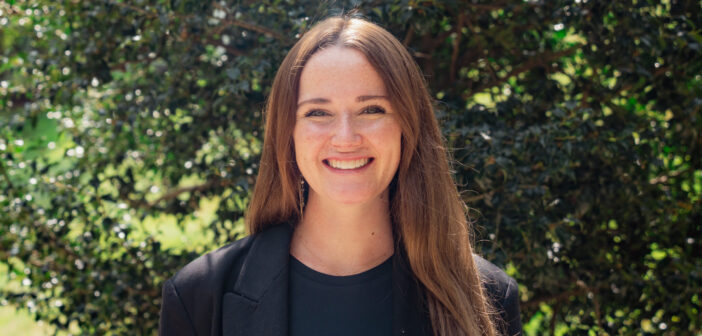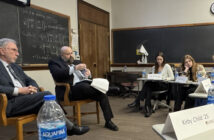As I wrap up my time as a columnist at The Brown and White, it feels only right to reflect on the inspiring story of an American journalist. Though fictional, “The Help” emphasizes the power someone in my role can truly have on an individual’s life, an entire community and even a nation.
The story takes place in Jackson, Mississippi in 1962 — when Jim Crow Laws exacerbated the racial divide in the United States, and civil rights figureheads such as Martin Luther King Jr. worked tirelessly in the fight for equality. Despite the growth of the civil rights movement at the time, the South remained entrenched in systemic racism.
The racial divide in this particular town — in reality and in this novel — was evident through strict segregation laws, an inequitable power structure and resistance to integration. The separation was especially apparent when wealthy white families employed Black women as their “maids.”
These women provided meals, cleaning services, childcare, clothing alterations and pretty much anything else they were instructed to do. Some were treated as members of the family, while others were barely even treated as human beings.
In the novel, each one of the lively cast of characters is presented so vividly. Some broke my heart, some made me laugh, some confused me, and some deserved a slap across the face.
The story begins when twenty-two-year-old Eugenia “Skeeter” Phelan returns from Ole Miss. With her degree in hand, Skeeter finds the one person she wants to share the news with has disappeared. Constantine, the Phelan family’s maid, practically raised Skeeter, and Skeeter loves her dearly. But no one will tell her where Constantine is.
Her mom’s biggest concern upon her daughter’s return is finding her a husband, and she’s horrified by Skeeter’s implications that she might make her own way in the world.
In deviance and true Skeeter fashion, she acquires a job writing a newspaper column and simultaneously starts poking around for answers about Constantine.
The column is about housekeeping tricks, and since Skeeter couldn’t have less knowledge about it, she seeks out the wisest maid in town for advice.
Enter Aibileen: a strong, proud woman raising her 17th white child.
Hardened by years of work as a maid and the loss of her son, Aibileen devotes herself to raising Mae Mobley, with the faintest hope that she might turn out better than her mother.
Aibileen’s best friend, Minny, is described as short, squat and sassy. She’s widely known for two things: her unbelievable cooking abilities and her inability to hold her tongue. Unfortunately, her bosses find her culinary skills don’t outweigh her back talk, and at the beginning of the story, she’s lost yet another job.
She’s fired by Hilly Holbrook, who embodies the nasty spirit of white supremacy and is obsessed with maintaining her social standing; regardless of who she hurts to do so. Hilly’s morals and her desire to widen the racial divide are deserving of a lot more than Minny’s sass. Though a necessary character for the plot, it was impossible not to absolutely despise her.
As the story continues, Skeeter searches for answers, letting her mom believe she’s searching for a husband. Aibileen throws herself into work, though she knows her boss might soon throw her out. And Minny finally lands another job, with which she also lands on a mountain of secrets.
Despite personal ups and downs, the invisible yet ever-present boundaries that define the town are suffocating all three women.
And so, they come together for a clandestine project that puts them all at risk.
Presenting the untold stories of as many maids as she can, Skeeter wants to write a book. She hopes to provide raw insight into what life is like as a Black maid in a white household, discussing experiences with kindhearted families, abusive bosses and everything in between.
Many maids in the town feel the risk of sitting with Skeeter and discussing their stories looms too large given their status in society, but Skeeter refuses to let the system win.
I actively rooted for Skeeter each time her mom or so-called friends tried to bring her down, and I felt more than immense admiration for the women who put their lives on the line for the slim-to-none chance they might have a minor impact.
As the story unfolds, the unlikely trio works together to cross a dangerous line — one that never should’ve been drawn in the first place.
Though the main message of the novel is clear, there are numerous smaller storylines in the book, filled with drama, romance, humor, sadness and pretty much any emotion a book could conjure. The commentary on the disgusting nature of segregation is nearly flawless, and the smaller storylines highlight the characters’ individual shortcomings to make the novel all the more authentic.
I could distinctly hear each character’s voice as I read their inner monologues, and the personas Hackett so skillfully brought to life were mirrored almost exactly as I’d imagined in the 2011 film adaptation of the book.
And the twist at the end brings me immense satisfaction every time I think about it.
I give this book 5/5 stars. Just read it. And if you don’t like it (as a journalist, I only say this because this is an opinion piece), I truly think you’re wrong.






Comment policy
Comments posted to The Brown and White website are reviewed by a moderator before being approved. Incendiary speech or harassing language, including comments targeted at individuals, may be deemed unacceptable and not published. Spam and other soliciting will also be declined.
The Brown and White also reserves the right to not publish entirely anonymous comments.